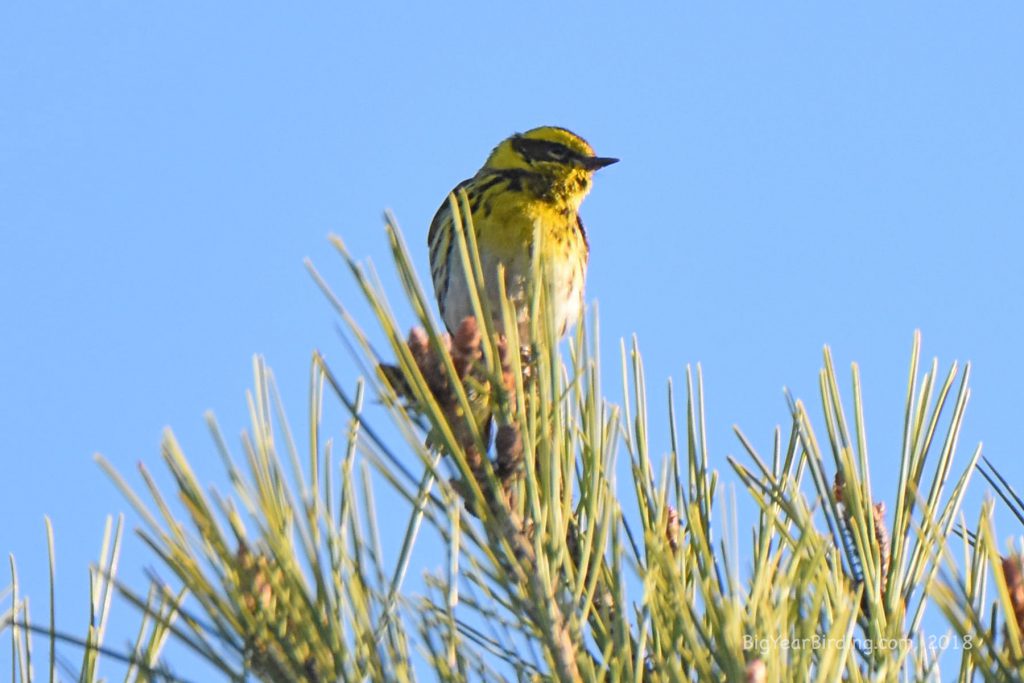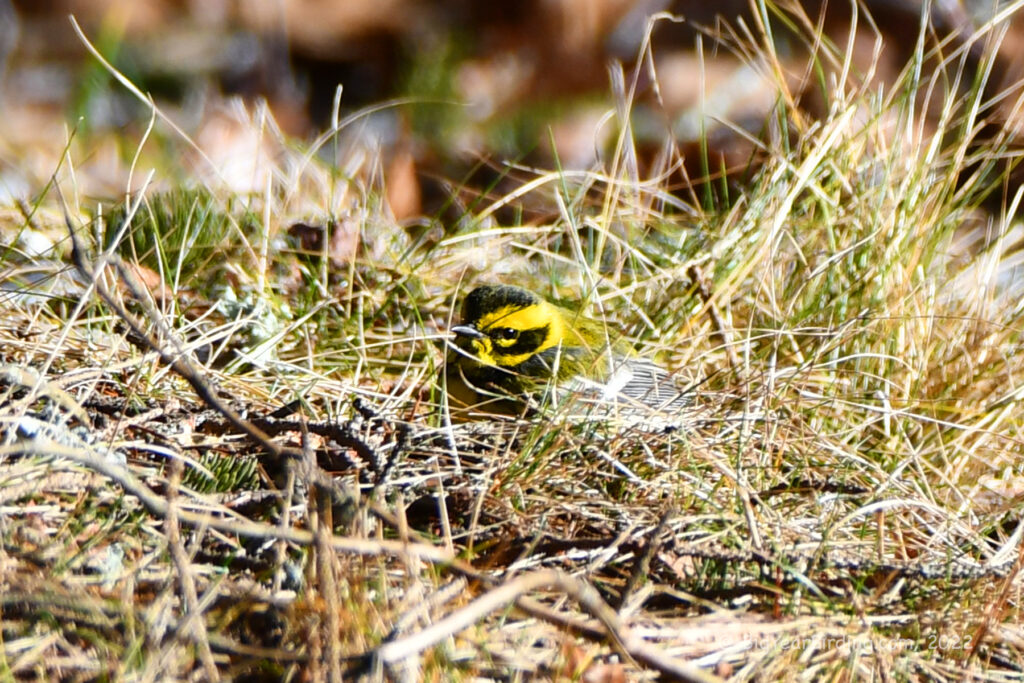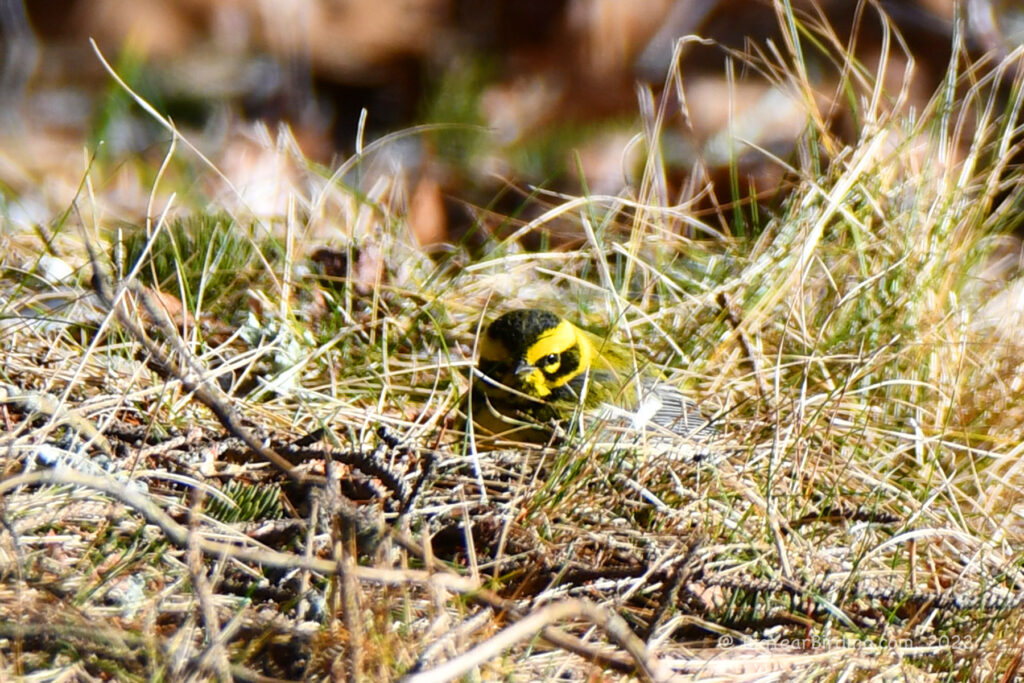
The Townsend’s Warbler (Setophaga townsendi) is a small songbird that measures about 4.5 inches in length and weighs around 0.3 ounces. These warblers have a striking appearance with black and yellow markings on their head, back, and wings. They have a black patch on their chin, a yellow patch on their cheeks, and two white wing bars. The male and female Townsend’s Warblers have a similar appearance, but the male has a blacker cap and a brighter yellow color than the female.

The Townsend’s Warbler is a migratory bird that breeds in the Pacific Northwest of North America and winters in Mexico and Central America. They usually migrate in the fall and spring, flying thousands of miles to reach their breeding and wintering grounds. In the winter, they can be found in a variety of habitats, including tropical and subtropical forests, shade coffee plantations, and mangroves.
During the breeding season, the Townsend’s Warbler can be found in coniferous and mixed coniferous forests, usually at high elevations. They build their nests in conifer trees, laying 3 to 5 eggs per clutch. The female incubates the eggs for about 12 days, and the young leave the nest after about 10 days. The parents continue to feed and care for the young for several more weeks.
The Townsend’s Warbler is primarily insectivorous, feeding on a variety of insects, including caterpillars, beetles, and spiders. During the winter, they also eat fruit and nectar. They forage in the trees and bushes, often hanging upside down to search for insects on the undersides of leaves.

The Townsend’s Warbler is a beautiful and fascinating bird that is loved by birdwatchers and nature enthusiasts. Its striking appearance, migratory behavior, and unique nesting habits make it a popular subject for scientific study and conservation efforts. With continued protection of their breeding and wintering habitats, the Townsend’s Warbler will continue to thrive and delight bird lovers for generations to come.
